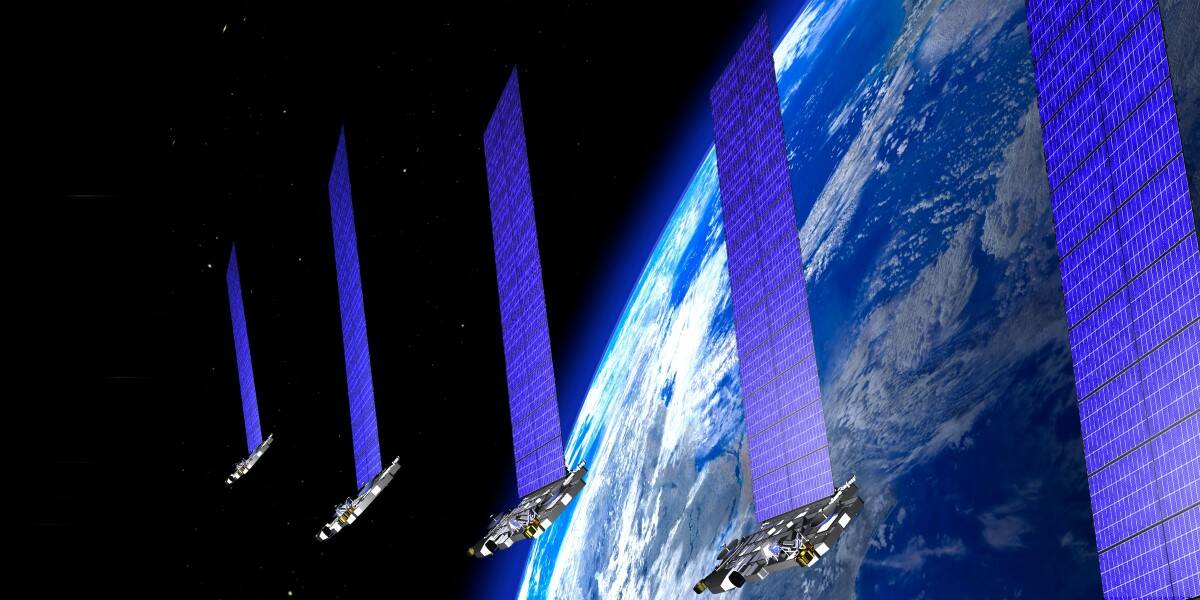Large numbers of low Earth orbit satellites such as those operated by Starlink could pose a threat to the planet’s ozone layer once they re-enter the atmosphere, according to recent research.
Constellations of small satellites being deployed for purposes such as broadband coverage typically have a relatively short life span, said to be about five years for Starlink, after which they re-enter the atmosphere and burn up, with replacements sent up to take over their roles.
But researchers at the University of Southern California (USC) say that this leads to the generation of aluminum oxides in the atmosphere, which are known to accelerate ozone depletion. The large number of satellites involved – Starlink alone was estimated to have 6,078 satellites in orbit as of May 2024 – could mean this presents a serious risk.
A research letter published in Geophysical Research Letters, “Potential ozone depletion from satellite demise during atmospheric re-entry in the era of mega‐constellations,” says the demise of a typical 250 kg satellite can generate around 30 kg of aluminum oxide nanoparticles, which may endure in the atmosphere for decades.
The researchers calculate that large constellations of satellites may cause over 360 metric tons of aluminum oxide compounds to enter the atmosphere per year, which could lead to significant ozone depletion.
Aluminum is one of the most common materials in satellites, the article says, and reacts with oxygen upon re-entry in the atmosphere to generate aluminum oxide that can interfere with ozone chemistry. A chlorine activation reaction catalyzed on the surface of aluminum oxide particles boosts ozone depletion.
The effects of aluminum have been known about for some time through studies of the emission of hundreds of tons of such particles from solid rocket motors during atmospheric ascents, but little attention has been paid to vehicles re-entering from low Earth orbit, and none covered the re-entry of satellites, according to the researchers.
They estimate that re-entry by-products may take up to 30 years to settle from the top of the mesosphere into the stratospheric ozone layer. Upon reaching an altitude of about 40 km, aluminum oxides catalyze chlorine activation, which promotes ozone depletion.
This would introduce a noticeable delay between the beginning of the injection process, when orbiting bodies are decommissioned, and the ozone depletion consequences becoming apparent in the stratosphere. As re-entry rates for satellites increase, it is crucial to further explore the concerns highlighted in this study, the researchers assert.
How worried about this should we be? The short answer seems to be that we don’t know, and more research is needed.
Up until now, scientists were confident that the ozone layer was slowly recovering from the damage done to it by chemicals such as chlorofluorocarbons (CFCs), thanks to the Montreal Protocol agreed back in the 1980s.
Last year, a UN-backed Scientific Assessment Panel reported that about 99 percent of banned ozone-depleting substances had been phased out, and said that if current policies remain in place, the ozone layer was expected to recover to 1980 values (before the appearance of the ozone hole) by around 2066 over the Antarctic, and by 2040 for much of the rest of the planet.
We asked the USC researchers whether the volume of aluminum oxides they expect to enter the atmosphere would seriously impact regeneration of the ozone layer.
They told us that the current study only compares the amount of aluminum oxides generated by satellite re-entry with the natural levels of it in the atmosphere, and they are not in a position to compare this against the effect of other chemicals at the moment, but plan to address this in a future study.
Robyn Schofield, Associate Professor in Atmospheric Chemistry at the University of Melbourne, explained in an article that other researchers studying aerosol particles in the stratosphere had previously detected traces of metals from spacecraft re-entry.
“We don’t know what effect this will have,” she said. “One likely outcome would be that the aluminium particles seed the growth of ice containing particles. This means that there would be more small, cold, reflective particles with more surface area on which chemistry can occur.
“We also don’t know how aluminium particles will interact with the sulfuric acid, nitric acid and water found in the stratosphere. As a result, we can’t really say what the implications will be for ozone loss.”
And there is some urgency to find out. Starlink and other low Earth orbit comms operators alone have plans for tens of thousands of new satellites by 2030, and the total worldwide could be in the millions, according to some estimates. ®

Dr. Thomas Hughes is a UK-based scientist and science communicator who makes complex topics accessible to readers. His articles explore breakthroughs in various scientific disciplines, from space exploration to cutting-edge research.








